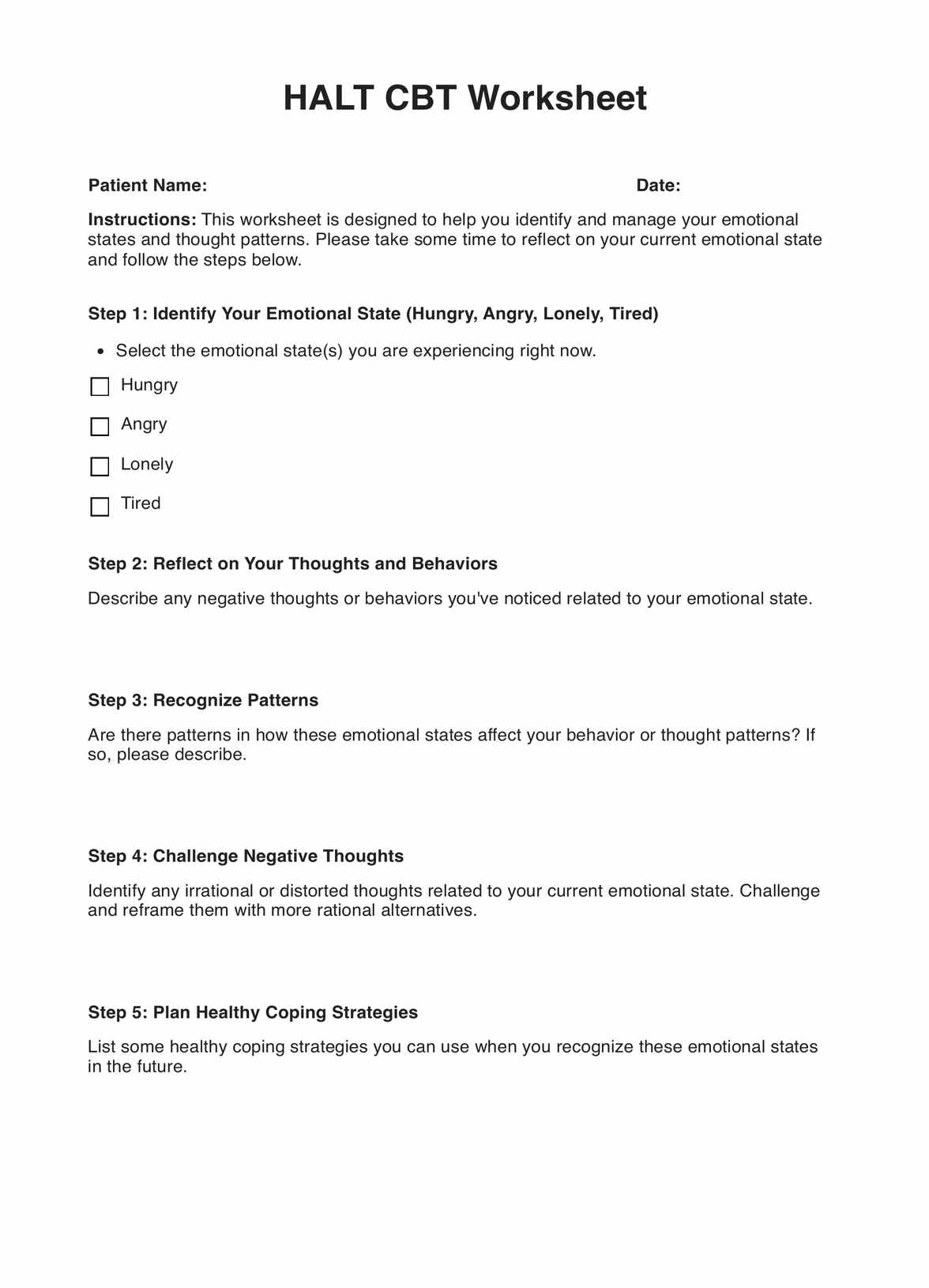The time required to complete the HALT CBT Worksheet varies from person to person. It may take 10-15 minutes on average, but it can be shorter or longer depending on the individual's reflection and writing speed.

HALT CBT Worksheets
Discover the benefits of the HALT CBT Worksheet - a valuable tool for emotional self-awareness and behavior management. Get started today!
Use Template
HALT CBT Worksheets Template
Commonly asked questions
The HALT CBT Worksheet assists in recognizing and managing emotional triggers and negative thought patterns, leading to improved emotional self-regulation and healthier behavioral responses.
It is best used to understand and address the underlying causes of your emotions and behaviors during emotional distress. Additionally, integrating it into a daily routine for self-awareness is beneficial.
EHR and practice management software
Get started for free
*No credit card required
Free
$0/usd
Unlimited clients
Telehealth
1GB of storage
Client portal text
Automated billing and online payments











